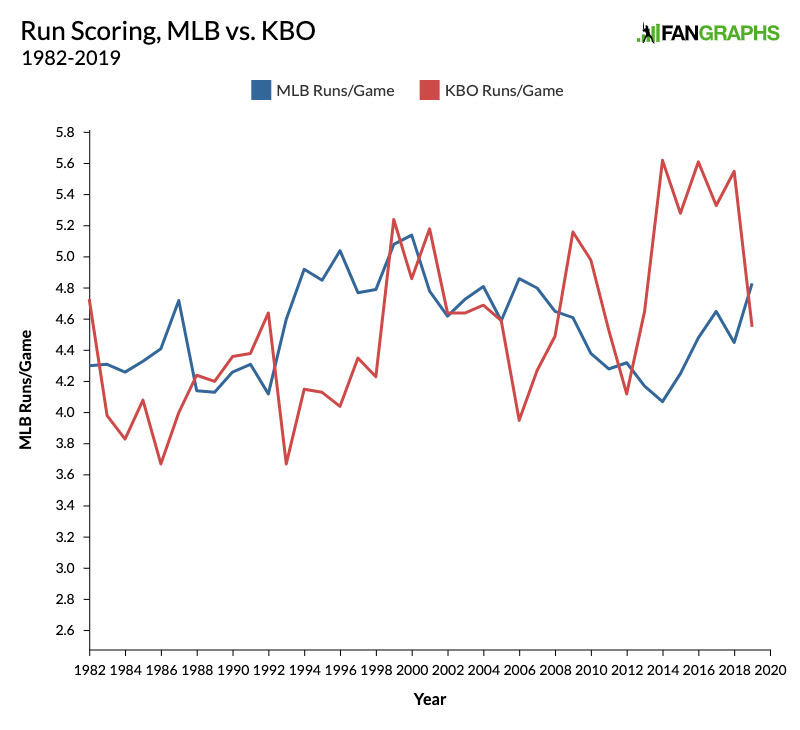A Quick Comparison of Historical KBO and MLB Trends
As I’ve found in my recent attempts to write about the Korea Baseball Organization, gathering statistics often requires a cross-site scramble, and historical information and context isn’t easy to come by. With that in mind, and particularly with the wide year-to-year fluctuation in that league’s home run rate occurring at the same time that balls have been soaring out of the park at record rates here in the States, I thought it would be worthwhile to pull together some quick comparisons to the trends we’ve seen in MLB.
First, let’s take a look at the two leagues’ run scoring since the KBO’s inception in 1982:

Perhaps understandably given its comparatively recent arrival, the KBO has been the more volatile of the two leagues in terms of scoring rates, with the higher peak (5.62 runs per game in 2014, to MLB’s max of 5.14 in 2000), the lower valley (3.67 runs per game in 1986, to MLB’s low of 4.07 runs per game in 2014), and the wider standard deviation (0.53 to 0.29). Note that the KBO’s peak and MLB’s nadir coincide with that aforementioned 2014 season, and that the two leagues are usually significantly far apart; the annual average, in terms of absolute value, is 0.49 runs. Read the rest of this entry »
 Jay Jaffe
Jay Jaffe